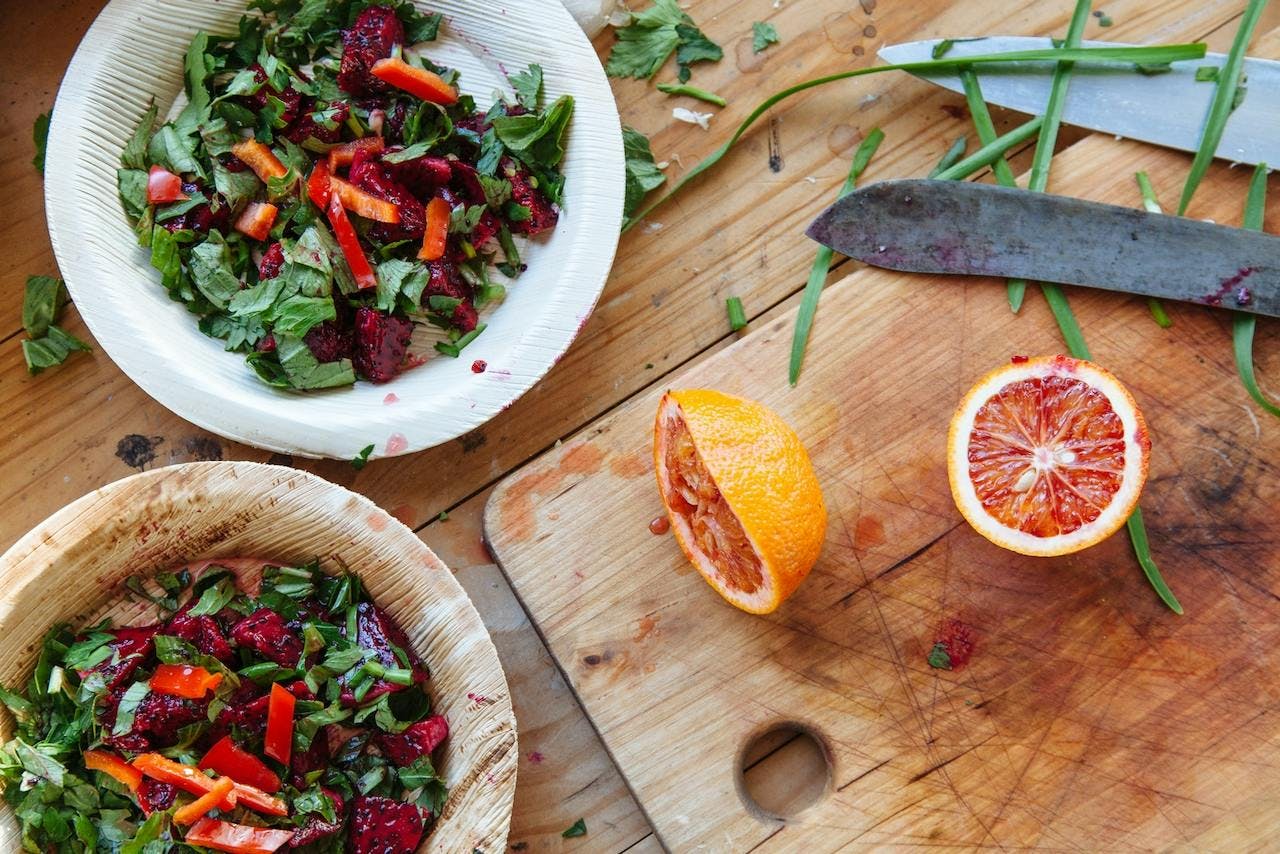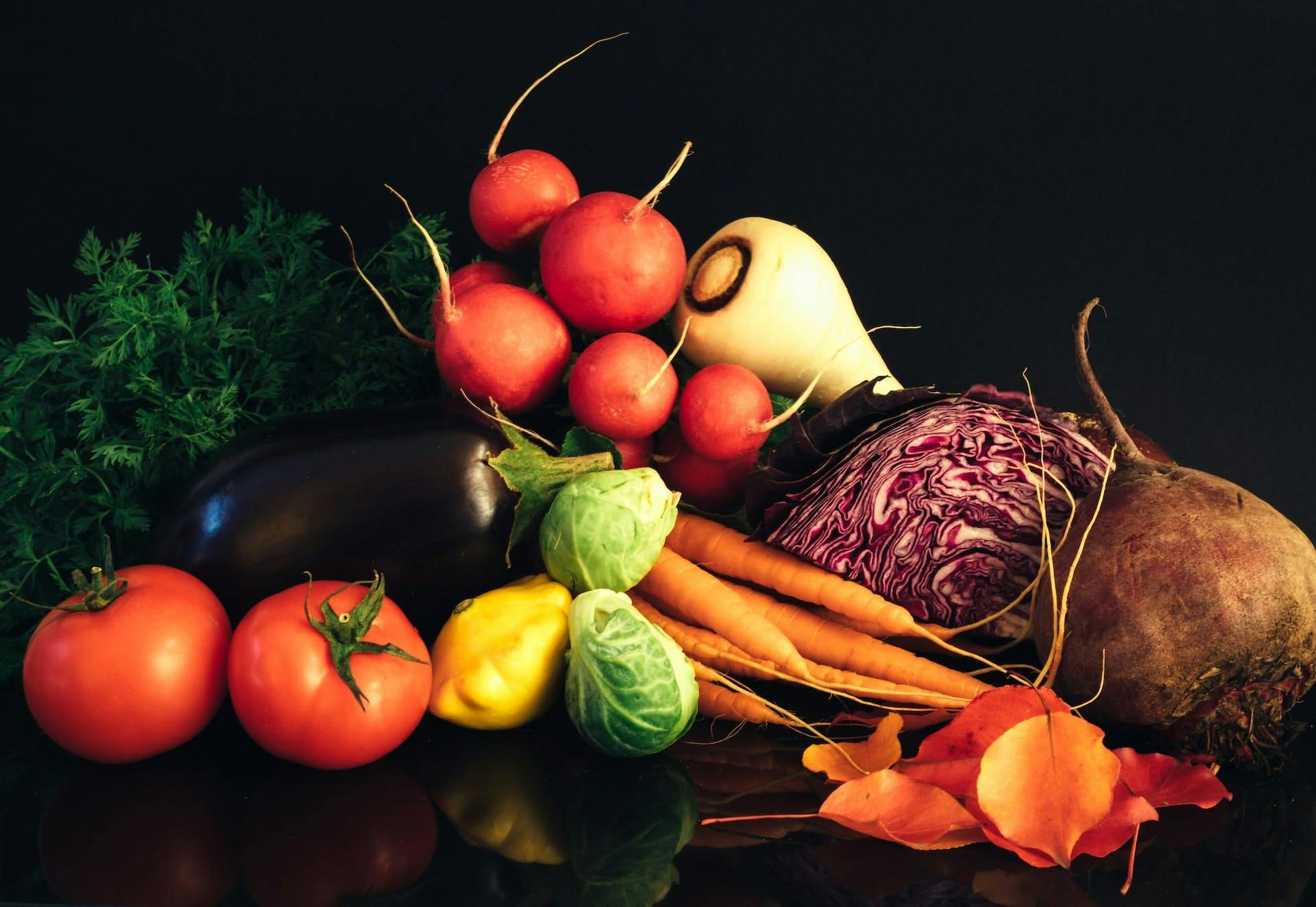The foods you eat are the first and most important thing you can change if you’re trying to improve your metabolic health. That’s because they directly impact your blood sugar levels, and keeping these levels balanced has powerful implications for your short- and long-term health — including preventing or reversing insulin resistance.
Insulin resistance, a condition where your body’s cells stop responding to the hormone insulin, can disrupt every system in your body — including your hormones, weight, and more.
It’s a vicious cycle that’s hard to break, and the key to reversing it has two parts:
- stabilize your glucose levels
- improve your insulin sensitivity
With these two goals in mind, we’ve put together a list of foods to eat and foods to avoid on your journey to reversing your insulin resistance.
4 foods to eat to reverse insulin resistance
If you’re eating with the aim to improve your insulin sensitivity, a general rule of thumb is to add lots of colorful vegetables to your plate, make sure you’re getting enough fiber, and eat lean proteins and healthy fats with most of your meals. Look for these 4 ingredients in particular:
1. Fresh berries
Berries — especially raspberries, blackberries, elderberries, and blueberries — are one of the richest sources of anthocyanins, a kind of antioxidant that fights free radicals (which play a major role in aging, inflammation, and chronic disease) [1].
Berries are also one of the best fruits to eat because they’re loaded with soluble fiber and lower on the glycemic index, meaning they won’t cause big blood sugar spikes. Just one cup of raspberries, for instance, has around 8 grams of fiber (the recommended daily intake is between 25 and 35 grams).
If you’re trying to boost your anthocyanin intake, always go for raw, fresh, and ripe produce (flash-frozen is okay as well), and avoid canned or jarred items. Anthocyanins are vulnerable to heat and other processing, and researchers have learned that canned foods made from anthocyanin-rich ingredients actually contain little to no anthocyanins themselves [3].
2. Lentils
Lentils are an efficient way to boost your fiber intake, clocking in at almost 15 grams in a quarter cup (which is a typical serving size for the average adult).
This is key because fiber, especially soluble fiber, can actually reduce your body’s glucose response after eating (minimizing spikes) and produce short-chain fatty acids in your gut — both of which can reverse insulin resistance [4].
Short-chain fatty acids are formed when the bacteria in your colon ferment foods that can’t be digested. They’ve been shown to stabilize glucose levels and regulate your metabolism.
Other studies show that lentils specifically can help people with larger waist circumferences with insulin sensitivity. A small study of 30 adults found that eating lentils 5 times per week for 8 weeks reversed insulin resistance, without some of the gastrointestinal side effects that other kinds of legumes sometimes cause [5].
3. Sardines
When it comes to nutrient-dense foods, sardines may not be the first thing that comes to mind. But these tiny, tinned fish are a nutritional powerhouse — great for cardiometabolic health and insulin sensitivity, too.
Omega-3s are also known to improve insulin sensitivity, more so than other fats [6].
In fact, a study on middle-aged overweight men found that eating more omega-3s is linked to improved insulin sensitivity and metabolic health in general [7]. On top of that, sardines are cheap, high in protein, and naturally low in mercury [8].
4. Avocados
The low-fat craze has largely been busted, and science has made it clear that eating a diet that contains healthy fats — especially unsaturated fats — is essential to metabolic health.
While foods like sardines may be rich in polyunsaturated fats (omega-3s are an example of this), avocados are rich in monounsaturated fats, which have been shown to improve insulin sensitivity [9].
Avocados are also high in fiber (a single avocado has around 10 grams — around 30% of your daily intake), which can help minimize post-meal glucose spikes.
What makes this such a star ingredient is its minimal flavor and endless versatility: add it to smoothies, desserts, dips, and dressing (to name several) for body and texture, or enjoy it as a side or topping to a ton of meals.
4 foods to avoid for insulin resistance
Processed foods, high-fructose corn syrup, and refined sugar are commonly understood to have negative effects on your health if overconsumed, but things like cold-pressed juice and sugar substitutes are still marketed as “healthy” alternatives.
So what should you actually steer clear of? Here are 4 foods (and alternatives) to skip the next time you’re shopping.
1. Breakfast cereals
More than 200 million Americans still eat breakfast cereal every day. Though we’ve come a long way since sugar, corn, and wheat were the three primary ingredients in all bestselling cereals, the newer options — often stamped with labels like “all-natural” and “organic” — aren’t always much better.
Many breakfast cereals, even the ones that don’t have a lot of refined sugar, are still high on the glycemic index — meaning they’ll trigger a large blood sugar spike. All of this can, over time, can make you less insulin sensitive and lead to insulin resistance.
Research has indicated that eating breakfast can actually keep your blood sugar levels more stable throughout the day, so it’s important to find a glucose-friendly breakfast alternative that isn’t full of sugar or refined grains.
Consider protein-rich, high-fiber, and low-GI breakfast options such as an omelet with vegetables, steel-cut oats with nut butter, and berries with Greek yogurt (but not yogurt that has pre-added fruit, which tends to be high in sugar).
2. French fries
You probably know that french fries aren’t great for your cardiometabolic health in general, but they’re especially challenging if you’re trying to manage your glucose levels.
That’s because they’re a starchy, high-GI food with little fiber and are often cooked in processed oils that may not be healthy when raised to high temperatures and reused.
Eating fat with carbs typically slows down your body’s absorption of glucose, so you may notice that your glucose isn’t spiking right away if you use a tool like a CGM to track your levels.
But fries (and fried foods in general) may actually cause a delayed spike due to their high fat and high carb content.
The fat from the fries increases your blood triglycerides for hours after the meal, and when these triglycerides reach the liver, where they’re processed, the liver becomes resistant to insulin, and secretes glucagon, leading to a rise in blood sugar levels — even long after you’ve eaten.
And if you’re struggling to reverse insulin resistance, there’s more: eating fried foods has been linked to a less diverse gut microbiome, which can make your gut more permeable and increase your risk of insulin resistance and inflammation [12].
Not to mention that eating just one medium serving of fries at McDonald’s per week can increase your risk of heart failure by 12% [13].
So what do you do instead?
Turns out that the way you prepare potatoes affects their GI. Boiled and roasted potatoes, for instance, have the least impact on your glucose levels [14]. Leaving the peel on potatoes also increases their fiber content.
But if you’re not pressed for time, the best hack for potatoes is to cook them, let them cool, and then reheat them — a process which increases their resistant starch content and can actually improve insulin sensitivity. Try boiling whole potatoes ahead of time, keeping them in the fridge throughout the week, and then dicing and roasting them in olive oil and herbs as needed.
3. Oat milk
Of all the non-dairy milk options, oat milk has the worst impact on your glucose levels, even if it’s marked as unsweetened. During production, enzymes are added to break down the complex starches in raw oats and transform them into maltose, a simple sugar.
As it turns out, maltose has a glycemic index of 105 — higher than even glucose [15]. Though the amount in a few tablespoons may not be an issue, drinking larger quantities of oat milk — using it as a base in your smoothies, adding it to a bowl of cereal, or making a latte with it — can trigger a big blood sugar spike (and secretion of insulin).
Though maltose hasn’t been well-studied in humans compared to sucrose and fructose, which are more commonly added to foods, some research in mice has suggested that it can impair glucose sensitivity and doesn’t help with insulin resistance [16].
Instead of oat milk (and its equally high-carb cousin, rice milk), opt for almond milk, coconut milk, and hemp milk — and make sure you get the unsweetened variety.
4. Sugar-free sodas
If you’re trying to offset insulin resistance by cutting back on refined sugar, you may be tempted to reach for the sugar-free or artificially sweetened versions of your favorite sodas.
While this may seem like a win because they won’t have a short-term impact on your blood glucose levels, non-nutritive sweeteners (NNS) may affect your glucose tolerance and insulin sensitivity via other pathways in the body.
For example, sucralose (Splenda) and saccharin (Sweet 'N Low) have been shown to change the composition of bacteria in the gut and even impair glycemic response in healthy adults, and some artificial sweeteners trigger an outsized insulin response — i.e., even though they aren’t raising your glucose levels, your body still overproduces insulin, which can promote fat storage.
So what should you do?
While natural sweeteners such as honey, allulose, stevia, and maple syrup may be better than artificial sweeteners, at the end of the day they’re still sugar — and will contribute to insulin resistance all the same.
Instead, go for seltzer with a squeeze of lemon, unsweetened tea (with an optional splash of almond milk), or water infused with citrus slices. If you find yourself still needing to eat something sweet, reset your taste buds by going on a 2-4-week break from all sweet things.
Key takeaways
Your diet plays a huge role in reversing or preventing insulin resistance, and one of the key metrics to pay attention to is your glucose levels. Here are some other diet tips that can help you keep your glucose levels stable:
- Eat more berries, sardines, lentils, and avocados. Avoid breakfast cereals, french fries, oat milk, and sugar-free products.
- Use a CGM to help you track your body’s specific glucose response to certain foods and drinks.
- When eating carbs, eat something with fiber (like a salad) first to minimize a spike.
- Practice time-restricted eating or intermittent fasting, which can improve insulin sensitivity and help you manage your weight.
- Diet can help you stabilize your glucose levels, but a combination of resistance training and aerobic exercise is another important way to improve your insulin sensitivity.
References:
- https://www.intechopen.com/chapters/53823
- https://www.ncbi.nlm.nih.gov/pmc/articles/PMC5691727/
- https://www.ars.usda.gov/ARSUserFiles/80400525/articles/jafc54_4069-4075.pdf
- https://www.ncbi.nlm.nih.gov/pmc/articles/PMC9181475/
- https://www.sciencedirect.com/science/article/abs/pii/S027153172200077X
- https://www.ncbi.nlm.nih.gov/pmc/articles/PMC5872768/
- https://www.nature.com/articles/srep06697
- https://health.clevelandclinic.org/3-fish-you-should-love-and-3-fish-you-should-snub/
- https://pubmed.ncbi.nlm.nih.gov/11317662/
- https://www.cspinet.org/news/us-cereals-higher-sugar-and-sodium-certain-other-countries-20161129
- https://www.hsph.harvard.edu/nutritionsource/carbohydrates/added-sugar-in-the-diet/
- https://diabetesjournals.org/care/article/44/9/1907/138884/Fried-Foods-Gut-Microbiota-and-Glucose-Metabolism
- https://heart.bmj.com/content/107/19/1567
- https://www.nutritionletter.tufts.edu/ask-experts/what-potatoes-have-the-highest-glycemic-index/
- https://www.sugarnutritionresource.org/sugar-health/glycemic-index-and-glycemic-load-2
- https://nutritionj.biomedcentral.com/articles/10.1186/s12937-021-00687-4


